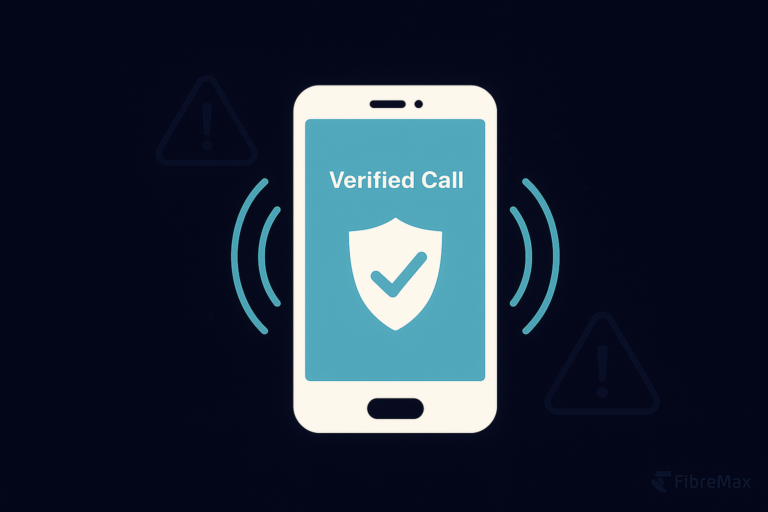Nothing tanks answer rates faster than a “Spam” or “Suspicious Call” warning.
The good news: most flags are preventable with clean Caller ID practices and sensible dialler hygiene. Below, we explain the “why” in plain English and give you practical steps you can implement today. If you need the right tools baked in, explore FibreMax’s phone solutions or learn more about us.
CALLER ID (CLI) BEST PRACTICE
Caller ID (often abbreviated CLI for Caller Line Identification) is simply the number that displays on your customer’s phone. Carriers and devices look for signals of trust: a stable number that belongs to a real business and can be called back. Rotating random numbers, blocking your caller ID, or using a number that can’t be reached sends the opposite signal.
DO THIS
Use a single, stable Australian number. Avoid random “local presence” rotations or spoofing.
Make it return-reachable for 30 days. Point to a live line, IVR or voicemail that stays active.
Keep branding consistent. Your displayed number should match your website, signatures and collateral.
DIALLER HYGIENE THAT CARRIERS LIKE
“Dialler hygiene” is how your outbound system behaves: pacing, retries and abandon rates. Aggressive settings create lots of short, unanswered or abandoned calls—patterns that look spammy to networks and analytics apps. Calmer pacing and respectful retry rules keep you off radar and improve human experience.
BEST-PRACTICE SETTINGS
Low abandon rates. If using predictive modes, target minimal abandons.
Smart retry rules. Cap same-day retries (e.g., max 2 attempts) and space attempts by hours, not minutes.
Schedule for the recipient’s time zone. Call within allowed hours and respect public holidays.
List hygiene. Remove bad numbers quickly; suppress opt-outs before the next campaign.
DATA THAT PROVES YOU’RE LEGITIMATE
If a carrier or regulator asks questions, your records should tell a clean story. Treat evidence like a seatbelt: you hope not to need it, but you’re glad it’s there.
KEEP
Call detail records** (attempts, outcomes, durations, abandonment).
DNCR checks** with dates/list versions (where applicable).
Script/disclosure versions** with timestamps.
Opt-out capture** (who, when, method) and proof of suppression.
IF YOUR NUMBER GETS TAGGED
Sometimes good actors get caught in the net. When you see “Spam”/“Suspicious Call” warnings reported by recipients, act methodically to reverse it and avoid reinforcing the flag.
RECOVERY STEPS
1. Pause outbound prospecting on the affected number (CLI).
2. Collect evidence: your number, the receiving number, **exact warning text**, date/time (with time zone), screenshots, device/network (if known).
3. Spacer block via your provider (we’ll escalate to carrier partners).
4. Tune your dialler: reduce retries, lower predictive aggressiveness, scrub lists, verify calling windows.
5. Use inbound-first tactics while you wait (Article 4 covers this): send email/SMS to book a callback, or route warm inquiries to a tracked inbound line.
THE FIBREMAX ADVANTAGE
FibreMax helps you operationalise all of the above: stable, return-reachable numbers; clean caller-ID presentation; call-flow options (live line/IVR/voicemail); and logging that makes compliance auditable. If you want your outreach to be effective and trusted, we can help configure it right from day one.
—
TL;DR checklist
✅ Use one stable, return-reachable Australian number for outbound.
✅ Keep abandon rates low; limit retries and space them out.
✅ DNCR-wash where required and suppress opt-outs immediately.
✅ Record everything: CDRs, DNCR checks, scripts, opt-outs.
✅ If tagged, pause, collect evidence, escalate, and tune your pacing.


